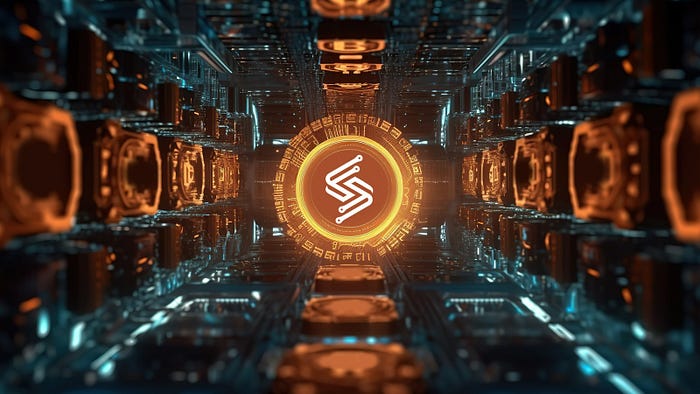
A Comparative Analysis of Leading Blockchain Platforms: Sardis, Solana, Ethereum, Polkadot, Binance Smart Chain, Avalanche, and Stellar
Release Date: 2023-10-24 10:37:58
Writer: Sardis Network
Blockchain technology has revolutionized various industries, offering decentralized solutions, security, and transparency. This article presents a comprehensive comparison of seven prominent blockchain platforms, namely Sardis, Solana, Ethereum, Polkadot, Binance Smart Chain, Avalanche, and Stellar. We will delve into their foundational aspects, technical specifications, consensus mechanisms, scalability, transaction fees, and other key parameters.

- Foundational Aspects:
Sardis:
- Year of Foundation: 2022
- Native Token: SRDS
- Architecture: Multichain
- Programming Language: Go, Solidity
Solana:
- Year of Foundation: 2020
- Native Token: Sol
- Architecture: Singlechain
- Programming Language: Rust
Ethereum:
- Year of Foundation: 2015
- Native Token: ETH
- Architecture: Singlechain
- Programming Language: Solidity
Polkadot:
- Year of Foundation: 2020
- Native Token: DOT
- Architecture: Multichain
- Programming Language: Rust
Binance Smart Chain:
- Year of Foundation: 2019
- Native Token: BNB
- Architecture: Singlechain
- Programming Language: Solidity
Avalanche:
- Year of Foundation: 2020
- Native Token: AVAX
- Architecture: Multichain
- Programming Language: Go
Stellar:
- Year of Foundation: 2014
- Native Token: XLM
- Architecture: Singlechain
- Programming Language: StellarCore
2. Technical Specifications:
- Theoretical TPS (Transactions Per Second):
— Sardis: 100,000+
— Solana: 65,000
— Ethereum: 15
— Polkadot: 1000
— Binance Smart Chain: 100
— Avalanche: 4000
— Stellar: 2000
- Current TPS of a single chain:
— Sardis: 4,378
— Solana: 5,000
— Ethereum: 12
— Polkadot: 1,000
— Binance Smart Chain: 56
— Avalanche: 850
— Stellar: 200
- Block Time:
— Sardis: 3 seconds
— Solana: 0.4 seconds
— Ethereum: 13 seconds
— Polkadot: 6 seconds
— Binance Smart Chain: 3 seconds
— Avalanche: <3 seconds
— Stellar: 5 seconds
- Finality:
— Sardis: 3 seconds
— Solana: 46 seconds
— Ethereum: Up to 15 minutes
— Polkadot: Up to 1 minute
— Binance Smart Chain: 45 seconds
— Avalanche: Up to 1 minute
— Stellar: 5 seconds
3. Consensus Mechanisms:
- Sardis: HPoS
- Solana: PoS
- Ethereum: PoS
- Polkadot: NPoS
- Binance Smart Chain: PoS
- Avalanche: PoS
- Stellar: Federated Byzantine
4. Ecosystem Features:
- EVM (Ethereum Virtual Machine) Compatibility:
— Sardis: Yes
— Solana: No
— Ethereum: Yes
— Polkadot: No
— Binance Smart Chain: Yes
— Avalanche: Yes
— Stellar: No
- Transaction Fee (per transaction):
— Sardis: $0.00000336
— Solana: $0.00001
— Ethereum: $15
— Polkadot: $0.15
— Binance Smart Chain: $0.13
— Avalanche: $0.001
— Stellar: $0.00001
5. Network Features:
- Use of Multiple Chains:
— Sardis: Yes
— Solana: No
— Ethereum: No
— Polkadot: No
— Binance Smart Chain: No
— Avalanche: Yes
— Stellar: No
- Consensus from Multiple Underlying Chains:
— Sardis: Yes
— Solana: No
— Ethereum: No
— Polkadot: Shared security with relay chain
— Binance Smart Chain: No
— Avalanche: Yes
- Cross-chain Data Visibility of Self-sovereign Chains:
— Sardis: Yes, full support. Also via bridge
— Solana: No
— Ethereum: Only via bridge
— Polkadot: Yes
— Binance Smart Chain: No
— Avalanche: Yes
— Stellar: Yes
Conclusion:
Among the discussed blockchain platforms, Sardis stands out with its unique features and capabilities. With a foundation established in 2022, Sardis aims to provide a multichain architecture that supports high scalability and throughput. With a theoretical TPS exceeding 100,000, Sardis showcases its potential for handling large transaction volumes.
Sardis also distinguishes itself with the HPoS (Hybrid Proof-of-Stake) consensus mechanism, which combines the benefits of both proof-of-stake and proof-of-authority. This innovative approach enhances security and efficiency within the network.
Furthermore, Sardis offers full EVM compatibility, allowing developers to leverage their existing smart contracts and decentralized applications from the Ethereum ecosystem. This compatibility fosters seamless integration and interoperability between the two platforms.
With a transaction fee as low as $0.00000336 per transaction, Sardis provides an attractive option for cost-effective transactions. The platform’s commitment to network decentralization, censorship resistance, and high data redundancy further ensures the integrity and reliability of its operations.
In conclusion, Sardis emerges as a promising blockchain platform that combines scalability, security, and compatibility. With its multichain architecture, high theoretical TPS, innovative consensus mechanism, and EVM compatibility, Sardis is well-positioned to cater to the growing needs of decentralized applications and enterprise use cases. As Sardis continues to evolve, it holds significant potential for transforming various industries and driving the adoption of blockchain technology.